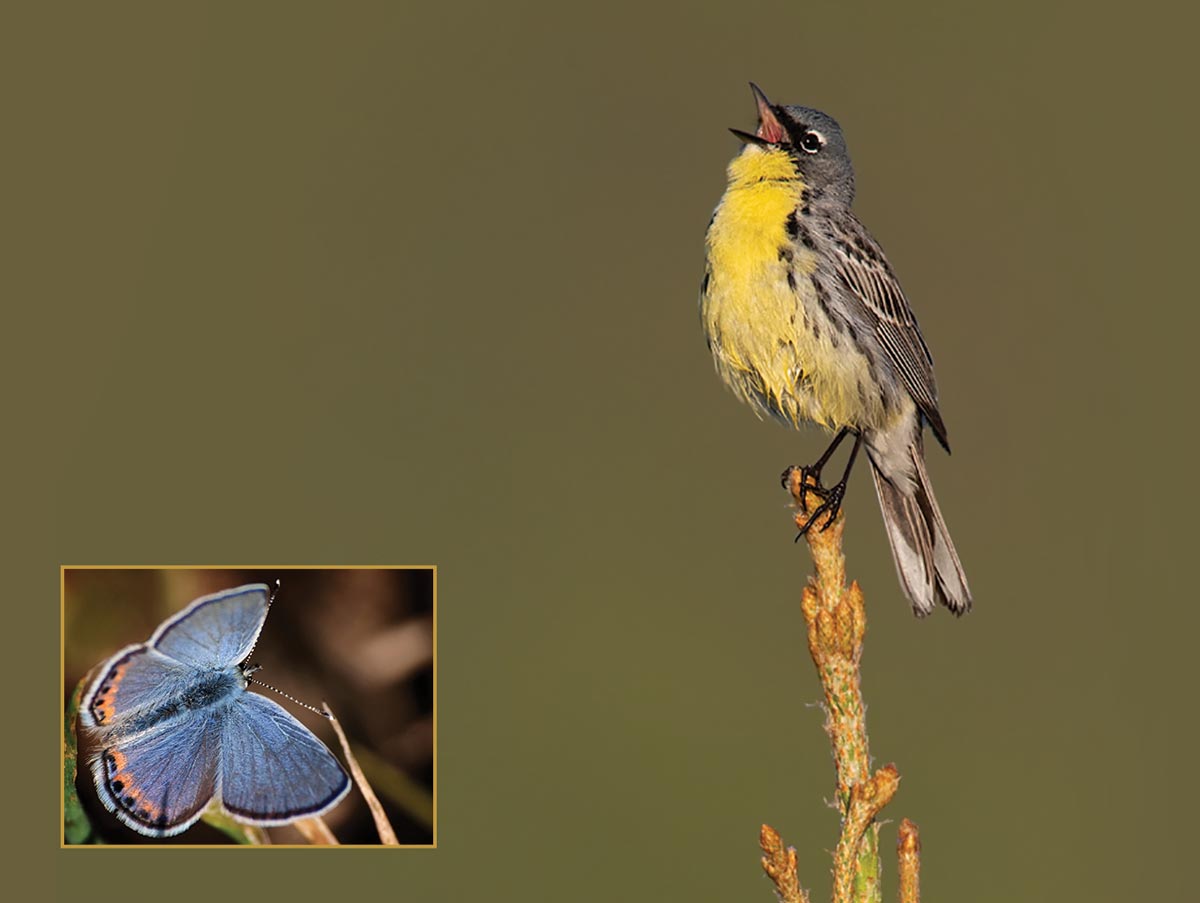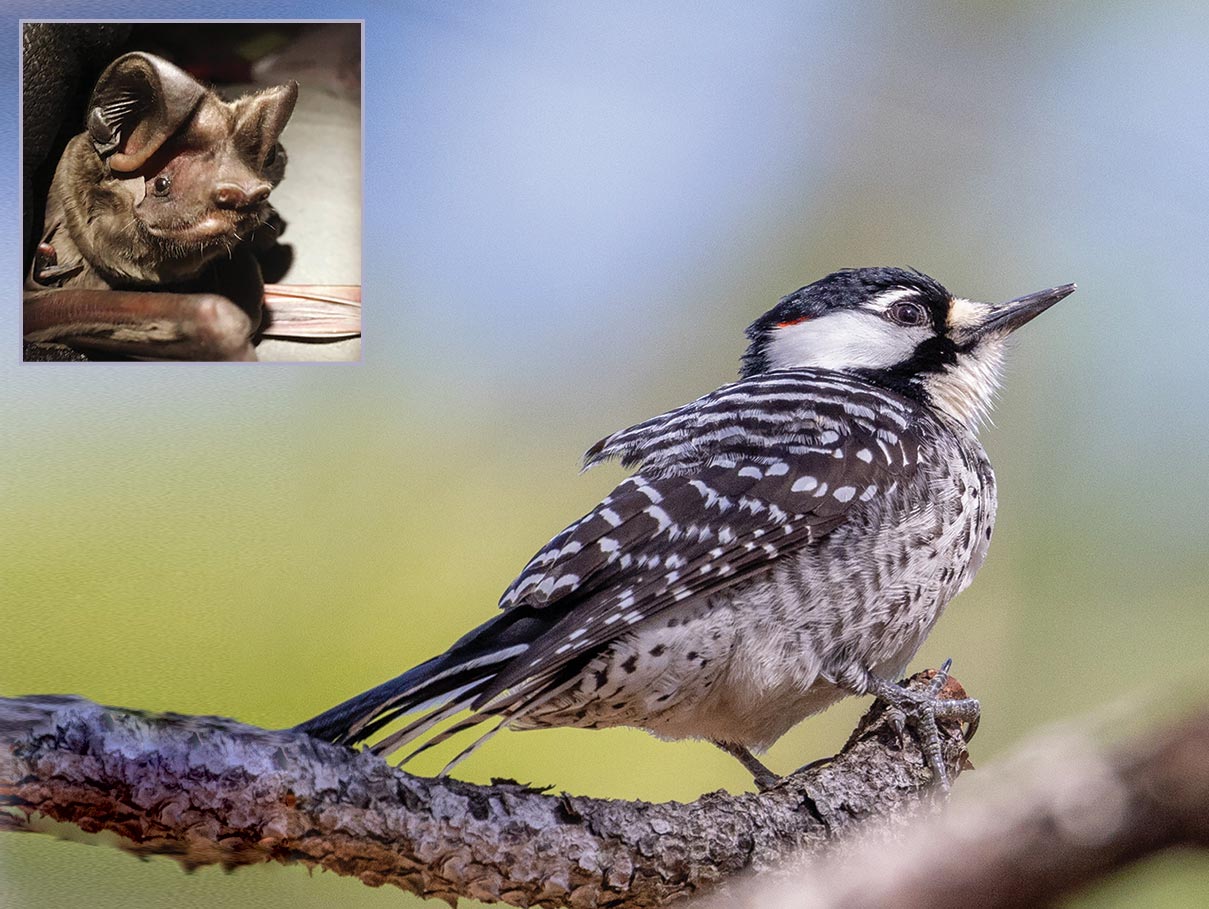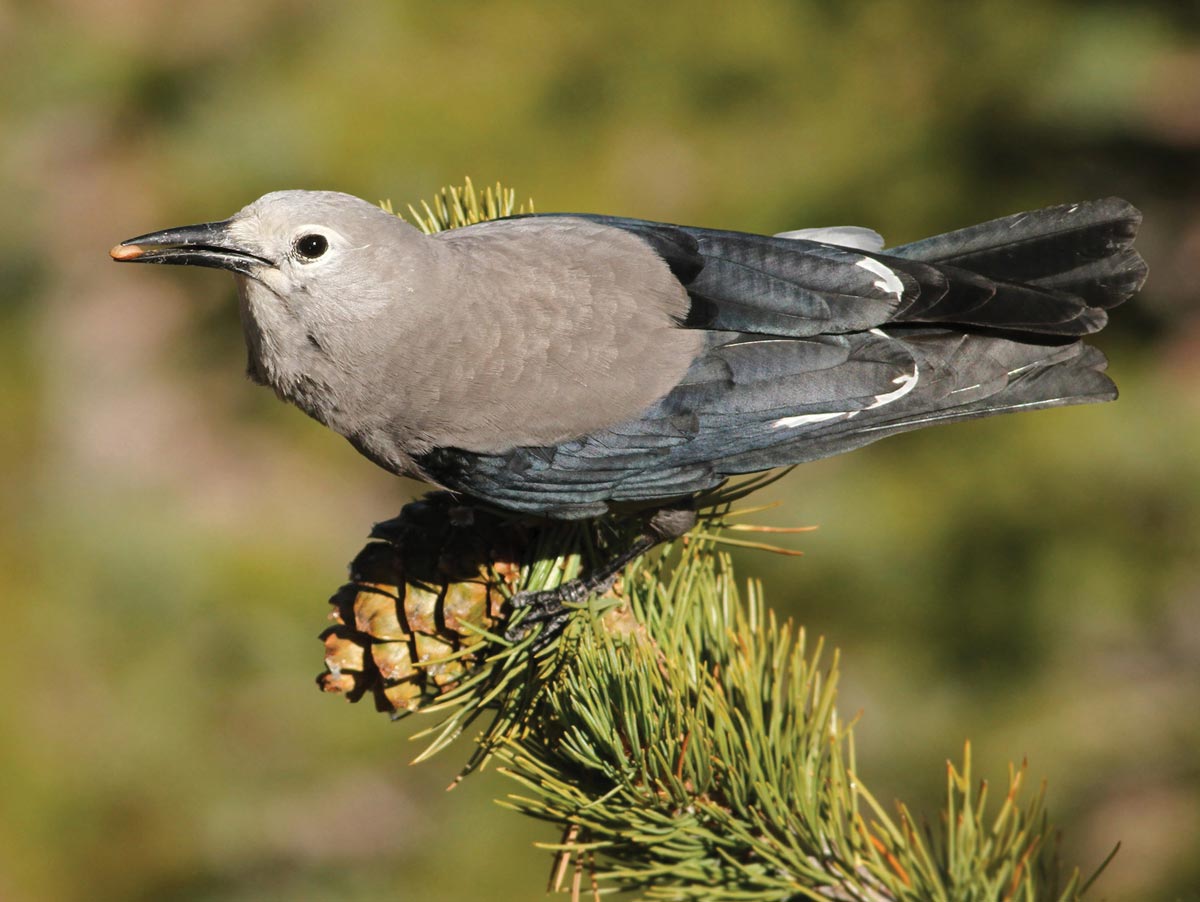Birds Are a Key Investment for Protecting Biodiversity
With more than 12,000 animals and plants identified by wildlife agencies in all 50 states as Species of Greatest Conservation Need, the starting points for biodiversity conservation in the U.S. may seem almost endless. But birds offer a solid start—as species that are highly responsive to conservation efforts, and as indicators of biodiversity renewal that benefit all manner of plants, mammals, amphibians, insects, and fish.
When funding is dedicated to help a bird in distress—and science guides conservation action—bird populations respond with big gains. But that’s not all. Ecosystem restoration is like the rising tide that lifts all boats; many other at-risk species of wildlife and plants benefit from habitat conservation for birds.
Restoring warbler habitat helps butterflies

The Kirtland’s Warbler was a charter member of the Endangered Species Act in 1973, when only about 160 breeding pairs of these dandelion-yellow warblers were left in a sliver of Michigan. Almost 50 years later—after an intensive effort by the U.S. Forest Service, U.S. Fish and Wildlife Service, and state partners in Michigan—more than 2,300 Kirtland’s Warbler pairs are breeding across Michigan, as well as in Wisconsin and Ontario, and the species was triumphantly delisted in 2019. Ecosystem restoration was the key to success, in particular the revitalization of jack-pine forests, which also benefitted other species—such as the federally endangered Karner blue butterfly.
Creating tree-cavity homes for woodpeckers and bats

The Red-cockaded Woodpecker—another charter member of the ESA— has responded strongly to conservation action, with efforts focused on military bases and private forestlands in the Southeast. Over the past few decades, the range of the Red-cockaded Woodpecker has swelled from just a few states to 11 states today stretching from Virginia to Texas. The renewal of longleaf pine forests is bringing the woodpecker back, while also creating breeding habitat for other endangered tree-cavity nesters, like the Florida bonneted bat (one of the most imperiled mammals on Earth).
The future of many plants depends on birds

Recent research points to the interconnectedness of birds and plants, and shows why bringing back birds is a key to ensuring climate adaptation for plants. The study, published in the journal Science (Fricke et al. 2022), showed that the ability of animal-dispersed plants to keep pace with climate change has been reduced by 60% due to the loss of birds, as well as mammals. More than half of all plant species rely on animals to disperse their seeds, and the seed stage is the only time when plants have the opportunity to move into latitudes or elevations where climatic conditions may be most suitable in the future. Put simply, the loss of birds has much larger ecosystem ramifications; and conversely, the revival of bird populations holds the potential for much broader biodiversity gains.
